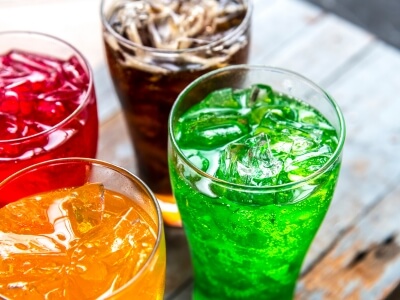Introduction to Carbonated Drinks and Filling Machines
Carbonated drinks (also known as soft drinks or sodas) are beverages that contain dissolved carbon dioxide gas, giving them effervescence (or fizz). These drinks have become a staple in many cultures worldwide and are enjoyed for their refreshing qualities and various flavors. The production of carbonated drinks involves many complicated processes, with one of the most important being the filling process. In this article, we will explore the world of carbonated drinks and then take a detailed look at the filling machines used to produce them.

The Science Behind Carbonated Drinks
Carbonated drinks are made through a process called carbonation, where carbon dioxide (CO2) is dissolved in water under pressure. When the pressure is released (when you open a bottle or can), the CO2 escapes, creating bubbles. The primary ingredients in carbonated drinks include:
- Water: The primary ingredient in most beverages.
- Sweeteners: Sugar or artificial sweeteners to add flavor.
- Acids: Such as citric or phosphoric acid, which add tartness and help preserve the drink.
- Flavorings: Natural or artificial flavors to make the drinks taste different.
- Preservatives: Added to help the drink last longer.
With these ingredients combined, you can make various beverages, from colas to fruit-flavored sodas.
The Role of Filling Machines in Beverage Production
Filling machines are critical to the beverage industry, especially for carbonated drinks. These machines automate the filling of bottles or cans with liquid while maintaining the carbonation level required for quality and taste. Several types of filling machines are designed specifically for carbonated beverages, each with different characteristics and capabilities.
Types of Filling Machines
| Type | Description |
| Isobaric Filling Machines | Maintain equal pressure between filling tank and bottle to preserve carbonation. |
| Gravity Filling Machines | Rely on gravity; simpler but may lose carbonation in highly fizzy drinks. |
| Vacuum Filling Machines | Use a vacuum to draw liquid into containers; less common for carbonated beverages. |
| Monoblock Filling Machines | Combine washing, filling, and capping functions into one unit for efficiency. |
Key Features of Modern Filling Machines
Modern filling machines have advanced technology to provide increased efficiency and product quality.
- High Speed: Many machines can fill thousands of bottles per hour (up to 12,000 bottles/hour)
- Precision Control: Advanced sensors and controls ensure accurate fill levels while minimizing waste.
- Automated Operation: Fully automatic systems reduce labor and improve consistency.
- Sanitary Design: Contact parts made from food-grade stainless steel to maintain hygiene and meet food safety standards.
Environmental Considerations
As carbonated drinks continue to gain popularity, the need for sustainable practices within the industry is also increasing. Many manufacturers seek to reduce waste related to packaging materials, like plastic bottles and aluminum cans. Innovations in recycling processes and biodegradable materials are emerging as companies work to reduce their environmental impact.
Conclusion
Carbonated drinks continue to be a favorite among consumers around the world for their refreshing taste and variety. The technology behind filling machines ensures that these drink products are made efficiently and are produced to high-quality standards. As the beverage industry continues to grow and change, advances in filling technology will help shape how carbonated drinks are made, highlighting the need for more sustainable practices and improved methods of production.
